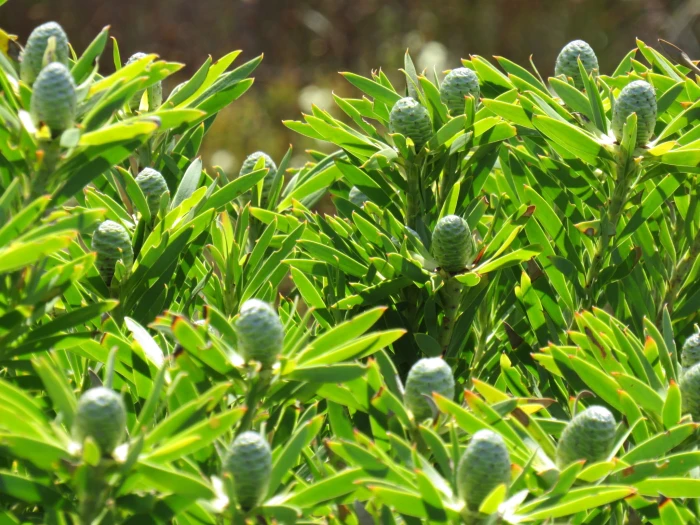Dune Conebush
(Leucadendron coniferum)
Dune Conebush (Leucadendron coniferum)
/
/

Jeremy Gilmore
CC BY 4.0
Image By:
Jeremy Gilmore
Recorded By:
Copyright:
CC BY 4.0
Copyright Notice:
Photo by: Jeremy Gilmore | License Type: CC BY 4.0 | License URL: http://creativecommons.org/licenses/by/4.0/ | Rights Holder: Jeremy Gilmore | Publisher: iNaturalist | Date Created: 2020-09-26T09:52:12-07:00 |











































Estimated Native Range
Climate Requirements for Chengdu, China
| This Plant | Your Site | Plant Suitability for Your Location | ||
|---|---|---|---|---|
| • Precipitation | 9" - 32" | 38" | Aquatic | Aquatic |
| • High Temp. | 72°F - 89°F | 86°F | Your summer temperatures are normal for this plant. | Excellent |
| • Low Temp. | 39°F - 50°F | 37°F | Your winter temperatures may be too cold for this plant | Too cold |
This plant may not grow well at your location - your precipitation is too high.
Summary
Leucadendron coniferum, commonly known as Dune Conebush, is an evergreen shrub or small tree native to the fynbos region within the Cape Provinces of South Africa, where it thrives in coastal dunes and sandy plains. It typically grows to a height of 6-8 feet and a width of 4-6 feet. The plant has a conical shape with dense foliage and bears green and red flowers in the summer and fall, which are not particularly showy but are interesting for their cone-like appearance. The female flower heads are about 14 mm (0.56 in) in diameter, with four line-shaped scales at the base of the style.
Dune Conebush is valued for its unique foliage and architectural form, making it a striking addition to water-wise gardens, coastal landscapes, and as a focal point in Mediterranean-style plantings. It is drought-tolerant once established and prefers well-drained sandy soils, requiring little maintenance. Full sun is essential for its health and to ensure the best coloration of its leaves. In cultivation, it is important to avoid overwatering and to provide protection from frost, as it is not frost-hardy. There are no major disease problems, but root rot can occur if the soil is not well-drained.CC BY-SA 4.0
Dune Conebush is valued for its unique foliage and architectural form, making it a striking addition to water-wise gardens, coastal landscapes, and as a focal point in Mediterranean-style plantings. It is drought-tolerant once established and prefers well-drained sandy soils, requiring little maintenance. Full sun is essential for its health and to ensure the best coloration of its leaves. In cultivation, it is important to avoid overwatering and to provide protection from frost, as it is not frost-hardy. There are no major disease problems, but root rot can occur if the soil is not well-drained.CC BY-SA 4.0
Plant Description
- Plant Type: Shrub
- Height: 6-5 feet
- Width: 4-6 feet
- Growth Rate: Moderate
- Flower Color: Green, Red
- Flowering Season: Summer, Fall
- Leaf Retention: Evergreen
Growth Requirements
- Sun: Full Sun
- Water: Medium
- Drainage: Medium, Fast
Common Uses
Bee Garden, Drought Tolerant, Low Maintenance, Potted Plant
Natural Habitat
Native to the fynbos region within the Cape Provinces of South Africa, particularly coastal dunes and sandy plains
Other Names
Common Names: Sunshine Conebush
Scientific Names: Leucadendron coniferum, Leucadendron sabulosum, Leucadendron acutum, Protea acuta, Protea virgata
GBIF Accepted Name: Leucadendron coniferum (Thunb.) Meisn.